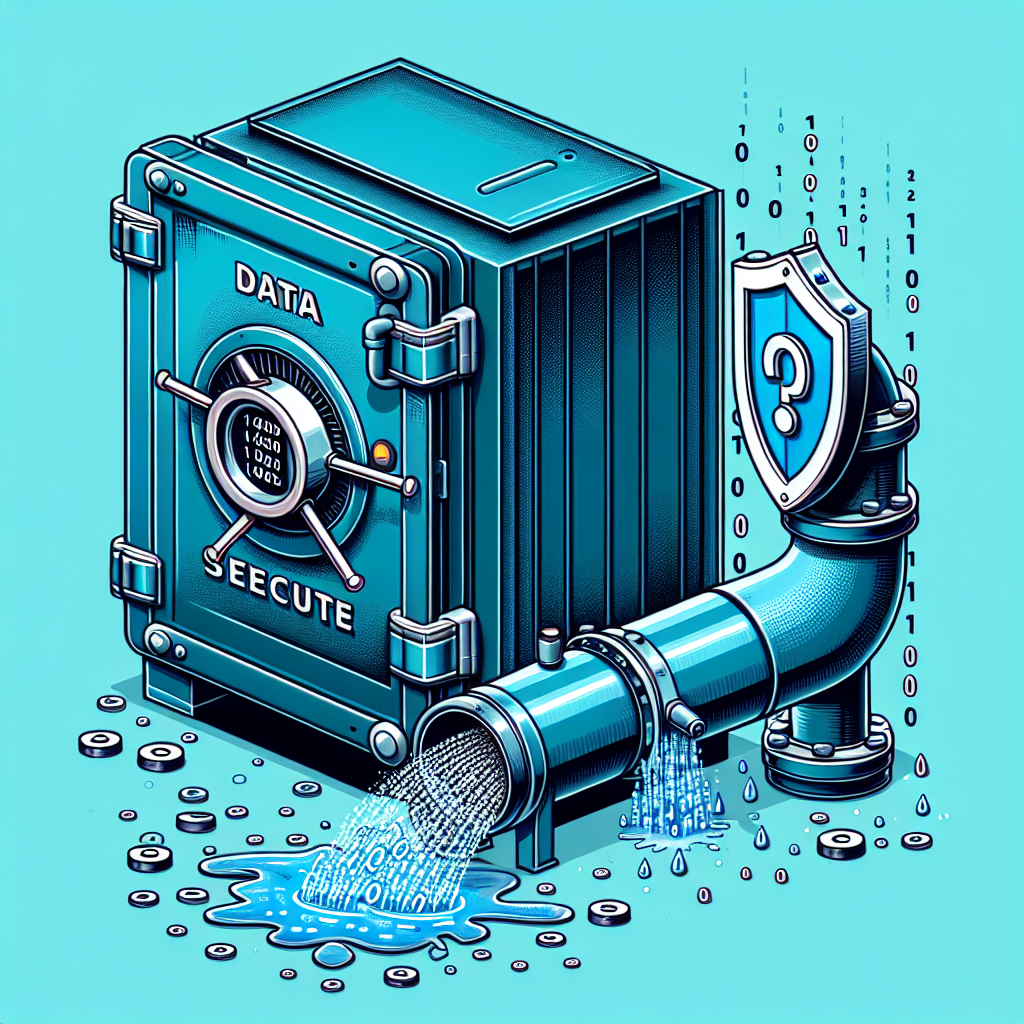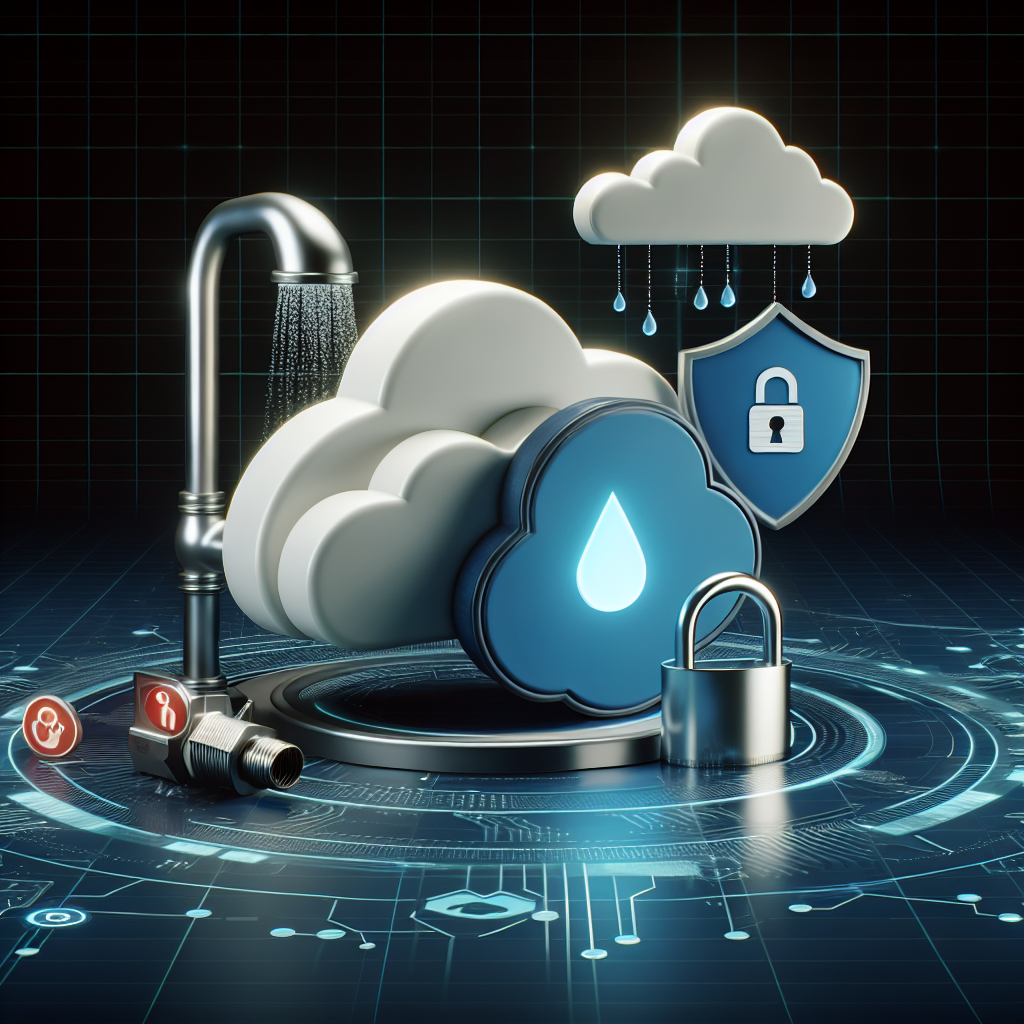In our digital age, personal data has become an invaluable asset that is constantly at risk of being exposed through data breaches and leaks. These incidents can lead to identity theft, financial loss, and even emotional distress. Therefore, it is crucial for individuals to take proactive measures to protect their personal data. This includes safeguarding sensitive information such as passwords, financial details, and social security numbers, as well as being wary of phishing scams and suspicious websites. By adopting best practices in data security, you can minimize the risk of falling victim to cyber threats and ensure that your personal information remains safe and secure.
Understanding Data Breaches and Leaks

Data breaches and leaks refer to the unauthorized access of confidential information, resulting in the exposure of personal data to malicious entities. These incidents can have severe consequences for individuals, including identity theft, financial loss, and reputational damage.
Definition of Data Breaches and Leaks
- Data Breaches: Occur when sensitive information is accessed, disclosed, or stolen without authorization. This can happen due to cyberattacks, insider threats, or human error.
- Data Leaks: Involve the unintentional exposure of data, often due to misconfigured security settings, inadequate encryption, or weak access controls.
Types of Data that Can Be Compromised
- Personal Identifiable Information (PII): Includes names, addresses, social security numbers, and other data that can be used to identify individuals.
- Financial Information: Such as credit card details, bank account numbers, and transaction history.
- Health Records: Confidential medical information that is protected by regulations like HIPAA.
- Login Credentials: Usernames, passwords, and security questions that grant access to online accounts.
Common Methods Used by Hackers to Access Personal Data
- Phishing: Sending deceptive emails or messages to trick individuals into revealing sensitive information or clicking on malicious links.
- Malware: Using malicious software to gain unauthorized access to devices and steal data.
- Brute Force Attacks: Attempting to crack passwords by systematically trying all possible combinations.
- SQL Injection: Exploiting vulnerabilities in web applications to access databases and extract sensitive information.
- Social Engineering: Manipulating individuals into divulging confidential data through psychological manipulation or deception.
Understanding these risks and methods can help individuals take proactive steps to safeguard their personal data and minimize the likelihood of falling victim to data breaches and leaks.
Differentiating Between Data Breaches and Data Leaks
Understanding Data Breaches and Leaks
Data breaches and data leaks are often used interchangeably, but it’s essential to understand the nuances that set them apart.
- Data Breaches:
- A data breach refers to a security incident where a malicious actor gains unauthorized access to a system or network, resulting in the exposure of sensitive information.
- Typically, data breaches involve a targeted attack on an organization’s infrastructure, aiming to steal valuable data such as personal information, financial records, or intellectual property.
-
Examples of data breaches include the infamous Equifax breach in 2017, where the personal data of over 147 million individuals was compromised, highlighting the severity and far-reaching consequences of such incidents.
-
Data Leaks:
- In contrast, data leaks involve the inadvertent or intentional exposure of information due to misconfigurations, human error, or insider threats.
- Data leaks often occur when sensitive data is unintentionally made accessible to unauthorized parties, either through misconfigured databases, unsecured cloud storage, or negligent employee actions.
- An illustrative example of a data leak is the exposure of millions of Facebook users’ data through third-party app developers, showcasing the risks associated with sharing personal information online.
Understanding the distinctions between data breaches and data leaks is crucial for implementing effective security measures to protect personal data from unauthorized access and mitigate the risks associated with cyber threats.

Importance of Protecting Personal Data
In the digital age, the significance of personal data security cannot be overstated. As individuals engage in various online activities, they constantly generate and share personal information, making them vulnerable to potential data breaches and leaks. The rampant collection and storage of personal data by organizations increase the risk of exposure, necessitating proactive measures to safeguard sensitive information from falling into the wrong hands.
Significance of Personal Data Security
Personal data security is crucial for maintaining privacy and confidentiality in today’s interconnected world. With the evolution of technology and the widespread use of digital platforms, individuals willingly or unknowingly provide personal information that can be exploited by malicious entities. Protecting personal data helps prevent unauthorized access, identity theft, financial fraud, and other forms of cybercrime that can have detrimental effects on individuals’ lives.
Potential Consequences of Personal Data Exposure
The exposure of personal data through data breaches and leaks can have far-reaching consequences for individuals. Once personal information is compromised, it can be used for various malicious purposes, including phishing scams, unauthorized account access, and even blackmail. Moreover, leaked data can lead to reputational damage, loss of trust, and financial repercussions for the individuals affected. Therefore, safeguarding personal data is essential to mitigate the risks associated with data breaches and leaks in the digital landscape.
Recognizing Vulnerabilities in Online Security
As individuals navigate the digital landscape, it is imperative to be cognizant of the vulnerabilities that exist within online security frameworks. Recognizing these weaknesses can empower individuals to take proactive measures in safeguarding their personal data from potential breaches and leaks. Here are some key aspects to consider:
- Identifying weak points where personal data can be targeted:
- Cybercriminals often exploit vulnerabilities such as outdated software, weak passwords, unsecured Wi-Fi networks, and phishing scams to gain unauthorized access to sensitive information.
-
Individuals should regularly update their software, use complex and unique passwords for each online account, avoid connecting to public Wi-Fi networks when accessing sensitive data, and exercise caution when clicking on links or providing personal information online.
-
Understanding the role of social engineering in data breaches:
- Social engineering tactics involve manipulating individuals into divulging confidential information or performing actions that compromise security.
- Common social engineering techniques include phishing emails, pretexting phone calls, and baiting schemes that exploit human psychology to deceive individuals.

- By being aware of these tactics and exercising skepticism towards unsolicited requests for personal information, individuals can mitigate the risks posed by social engineering attacks.
Best Practices for Data Protection
In today’s digital age, protecting personal data from data breaches and leaks is more crucial than ever. Implementing best practices for data protection can help safeguard sensitive information and mitigate the risk of unauthorized access. Here are some key strategies to enhance the security of your personal data:
Creating strong, unique passwords for online accounts
- Password Complexity: Ensure that your passwords are complex and not easily guessable. Use a combination of uppercase and lowercase letters, numbers, and special characters.
- Avoiding Common Passwords: Refrain from using common passwords such as “123456” or “password.” Opt for unique phrases or combinations that are difficult to crack.
- Password Managers: Consider using a reputable password manager to securely store and manage your passwords. This can help generate and store complex passwords for each of your accounts.
Implementing two-factor authentication where possible
- Enhanced Security: Two-factor authentication adds an extra layer of security by requiring a second form of verification, such as a code sent to your mobile device or email address.
- Multi-factor Authentication: Where available, opt for multi-factor authentication that combines multiple forms of verification for added protection.
- Enabling Two-Factor Authentication: Enable two-factor authentication on all accounts that offer this feature, especially for sensitive accounts like online banking or email.
Regularly updating security software and applications
- Patch Management: Stay vigilant about updating security software, operating systems, and applications to patch known vulnerabilities. Outdated software can be exploited by cybercriminals to gain unauthorized access.
- Automatic Updates: Enable automatic updates whenever possible to ensure that your devices are protected with the latest security patches.
- Vulnerability Assessments: Consider running regular vulnerability assessments to identify and address any potential weaknesses in your systems and applications.
By incorporating these best practices into your daily digital routines, you can fortify the security of your personal data and reduce the likelihood of falling victim to data breaches and leaks. Remember, proactive measures are key to safeguarding your sensitive information in an increasingly interconnected world.
Securing Personal Devices and Networks
In the digital age, safeguarding personal devices and networks is crucial to prevent data breaches and leaks. Implementing robust security measures can significantly enhance data protection and mitigate the risks of unauthorized access. Here are some best practices to secure personal devices and networks effectively:
-
Encrypting data on devices: Utilize encryption tools to encode sensitive information stored on your devices. Encryption scrambles data into a coded format that can only be deciphered with the appropriate decryption key. By encrypting data, even if a device is compromised, the information remains unreadable to unauthorized individuals, enhancing overall security.
-
Using secure connections: When accessing the internet or transmitting data, prioritize secure connections such as Virtual Private Networks (VPNs) or Secure Socket Layer (SSL) protocols. These technologies create encrypted tunnels that protect data in transit, shielding it from potential eavesdropping or interception by cybercriminals. Secure connections add an extra layer of defense against data breaches and leaks.
-
Setting up firewalls: Firewalls act as barriers between your devices/network and external threats, filtering incoming and outgoing network traffic based on predefined security rules. Configuring firewalls effectively can block malicious incoming traffic while allowing legitimate data to pass through, reducing the risk of unauthorized access or data exfiltration.
-
Installing antivirus programs: Deploying reputable antivirus software on your devices helps detect and remove malware, viruses, and other malicious software that could compromise your data security. Regularly updating antivirus programs ensures they stay current with the latest threats, bolstering your defense against potential data breaches and leaks.
By incorporating these measures into your data protection strategy, you can fortify your personal devices and networks against cyber threats, safeguarding your sensitive information from data breaches and leaks.
Responding to Data Breaches and Leaks
In the unfortunate event that personal data has been compromised through a data breach or leak, it is crucial to act swiftly and decisively to mitigate any potential damage and protect oneself from further harm.
Steps to take if personal data has been compromised
-
Assess the Extent of the Breach: The first step is to determine the scope of the data breach or leak. Identify what specific information has been compromised and how it may impact you.
-
Change Passwords and Secure Accounts: Immediately change the passwords for any accounts that may have been affected. Enable two-factor authentication where possible to add an extra layer of security.
-
Monitor Financial Statements: Keep a close eye on your financial statements for any suspicious activity. Report any unauthorized transactions to your bank or financial institution.
-
Contact Credit Bureaus: Consider placing a fraud alert on your credit reports with the major credit bureaus to prevent identity theft.
Reporting incidents to relevant authorities and organizations
-
File a Report with Authorities: Contact local law enforcement or data protection authorities to report the data breach. Provide as much detail as possible about the incident.
-
Notify Affected Organizations: Inform any companies or organizations that may have been involved in the breach. They may have specific protocols in place to address such incidents.
-
Stay Informed: Keep yourself informed about the latest developments regarding the data breach. Follow updates from the organization involved and take necessary precautions based on their recommendations.
By following these steps and taking proactive measures, individuals can better protect their personal data in the face of data breaches and leaks.
Educating Yourself on Data Privacy Regulations
In today’s digital age, staying informed about data privacy regulations is crucial to safeguarding your personal information from data breaches and leaks. Here are some key steps to educate yourself on data privacy regulations:
-
Familiarizing oneself with laws such as GDPR and CCPA: The General Data Protection Regulation (GDPR) is a comprehensive data privacy law that protects the personal data of individuals within the European Union (EU). It imposes strict requirements on how organizations handle and process personal data. Similarly, the California Consumer Privacy Act (CCPA) grants California residents certain rights over their personal information and requires businesses to disclose their data practices.
-
Understanding rights regarding personal data protection and privacy: By familiarizing yourself with data privacy regulations, you can better understand your rights concerning the protection of your personal data. These regulations often grant individuals rights such as the right to access their data, the right to request deletion of their data, and the right to opt-out of certain data processing activities. Understanding these rights empowers you to take control of your personal information and make informed decisions about how it is used and shared.
FAQs: Protecting your personal data from data breaches and leaks
What are common ways personal data can be compromised in a data breach?
Personal data can be compromised in a data breach through various means such as hacking into databases, phishing attacks, malware infections, stolen devices, and insider threats. It is important to take preventive measures to reduce the risk of your personal data being leaked or breached.
How can I protect my personal data from data breaches and leaks?
To protect your personal data from data breaches and leaks, you can start by using strong, unique passwords for all your accounts, enabling two-factor authentication whenever possible, avoiding clicking on suspicious links or downloading attachments from unknown sources, keeping your software and security patches up to date, and being cautious about sharing sensitive information online.
What should I do if I suspect my personal data has been compromised in a data breach?
If you suspect that your personal data has been compromised in a data breach, it is important to act quickly. Start by changing your passwords for all your accounts, monitoring your financial statements and credit reports for any unauthorized activity, reporting the incident to the relevant authorities or organizations, and considering freezing your credit to prevent further damage.
How can I stay informed about data breaches and leaks?
To stay informed about data breaches and leaks, you can sign up for data breach notification services offered by various organizations, monitor news outlets and cybersecurity blogs for updates on recent breaches, and regularly check your accounts for any suspicious activity. It is also important to educate yourself about cybersecurity best practices to protect your personal data.


